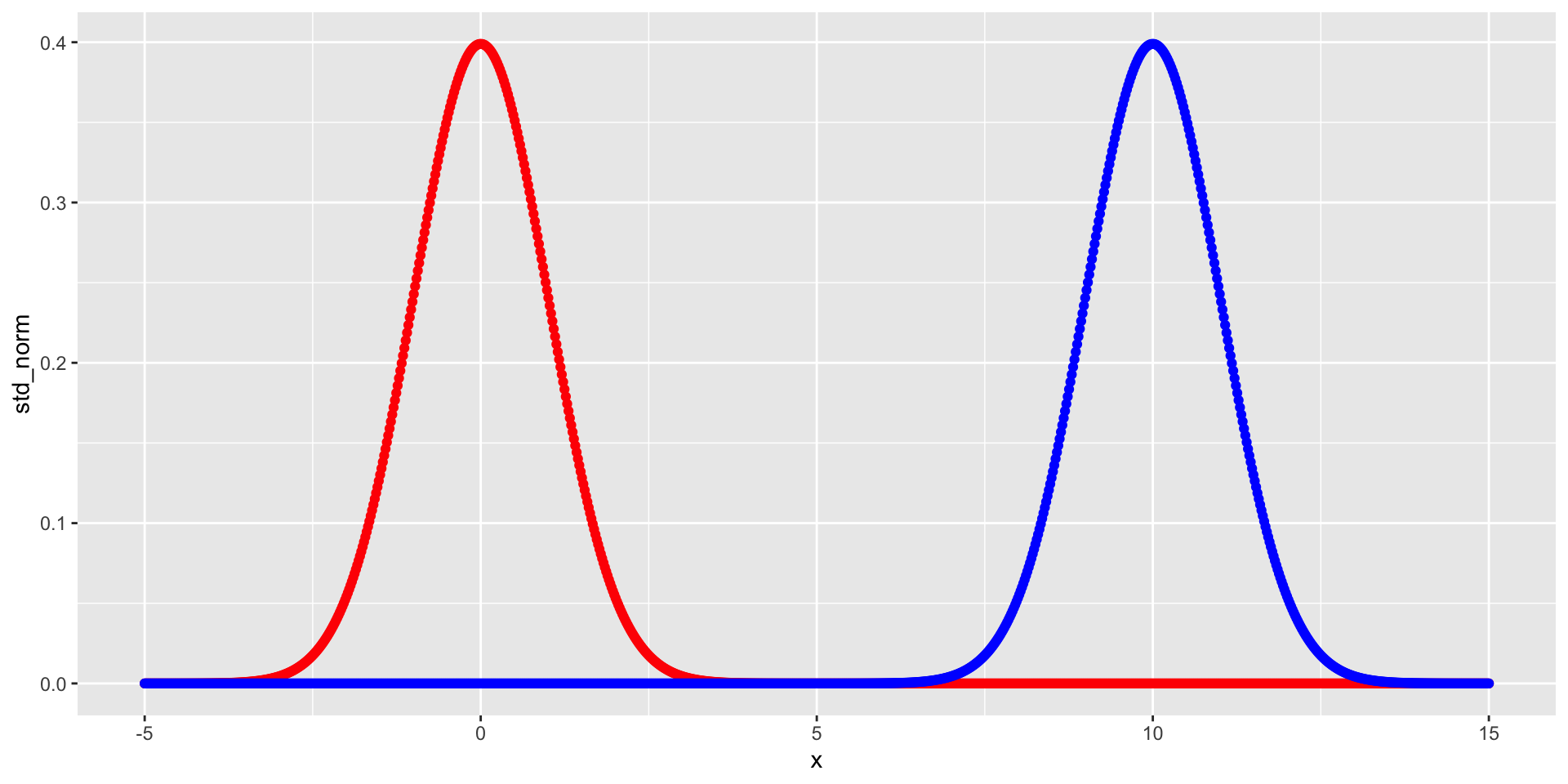
Chapter 12: The normal probability model
STAT 1010 - Fall 2022
Learning outcomes
- The shape of the normal distribution and why it is important
- The central limit theorem.
- Understand shift and scales and how to compute them to find \(z\) scores
- Basic tests of normality including qqplots and kurtosis
Binomial -> Normal
As the number of trials increases, the binomial pdf becomes well approximated by a normal distribution.
“Observed data often represent the accumulation of many small factors.”
Normal
\(Y \sim N(\mu = 4, \sigma^2 = 25)\)
- We use two parameters to describe a Normal distribution
- \(Y \sim N(\mu = 0, \sigma^2 = 1)\)
- \(Y\) above is the standard normal distribution
Central limit theorem
The probability distribution of a sum of independent random variables of comparable variance approaches a normal distribution as the number of summed random variables increases.
Shifts & scales
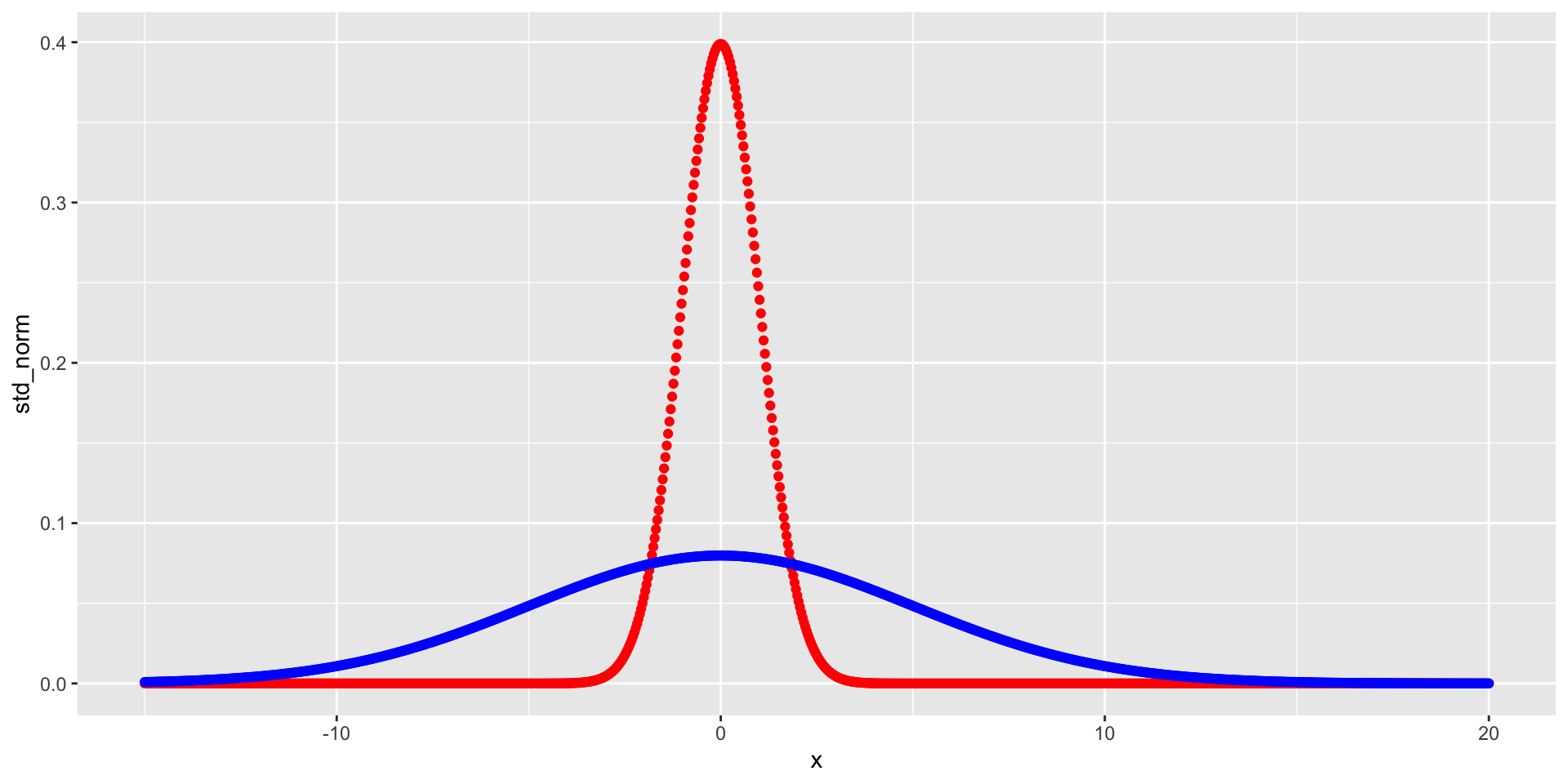
Standardizing
Historically, it could be quite hard to find probabilities, so standardizing was important.
- use shift and scale information from above
- \(Z = \frac{X-\mu_X}{\sigma_X}\)
- Find \(E(Z)\)
- \(E(Z) = E(\frac{X-\mu_X}{\sigma_X})\)
- \[\begin{aligned} E(Z) & = E(\frac{X-\mu_X}{\sigma_X})\\ & = \frac{1}{\sigma_X}E(X-\mu_X) \\ &= 0 \end{aligned}\]
02:00
Standardizing
- use shift and scale information from above
- \(Z = \frac{X-\mu_X}{\sigma_X}\)
- Find \(Var(Z)\)
- \[\begin{aligned} Var(Z) & = Var(\frac{X-\mu_X}{\sigma_X})\\ & = \frac{1}{\sigma^2}Var(X-\mu_X) \\ &= \frac{\sigma^2}{\sigma^2} = 1 \end{aligned}\]
02:00
Example
Let \(Y \sim N(\mu_Y = 5, \sigma_Y^2 = 4)\), standardize the following and find the probability:
\(P(Y < 3)\)
\[\begin{aligned} P(Y < 3) &= P(\frac{Y - \mu_Y}{\sigma_Y} < \frac{3-\mu_Y}{\sigma_Y}) \\ & = P(Z < \frac{3-5}{2} = -1) \end{aligned}\]
pnorm(-1)\(0.1586553\)pnorm(-1, mean = 5, sd = 2)
02:00
Queen Bee
Percentiles are always to the left.
Example
Let \(Y \sim N(\mu_Y = 5, \sigma_Y^2 = 4)\), standardize the following and find the probability:
\(P(Y > 7)\)
\[\begin{aligned} P(Y > 7) &= P(\frac{Y - \mu_Y}{\sigma_Y} > \frac{7-\mu_Y}{\sigma_Y}) \\ & = P(Z > \frac{7-5}{2} = 1) \end{aligned}\]
pnorm(1)\(0.8413447\)pnorm(1, mean = 5, sd = 2)
02:00
Graph
Example (cont’d)
- \(P(Z > 1) = 1 - P(Z<1)\)
1 - pnorm(1)\(0.1586553\)1 - pnorm(1, mean = 5, sd = 2)
02:00
Rule
Undo
Percentiles
- Find \(z : P(Z < z) = .1711\)
qnorm(.1711)\(-0.9498273\)- A medical test produces a score that measures the risk of a disease. In healthy adults, the test score is normally distributed with \(\mu=10\) point and \(\sigma = 2.5\). Lower scores suggest the disease is present. Test scores below what threshold signal a problem for only \(1\%\) of healthy adults?
qnorm(.01, mean = 10, sd = 2.5)\(4.18413\)
02:00
Normality tests
Looking at the data
- multimodal
- skewness
- outliers
Plot - normal
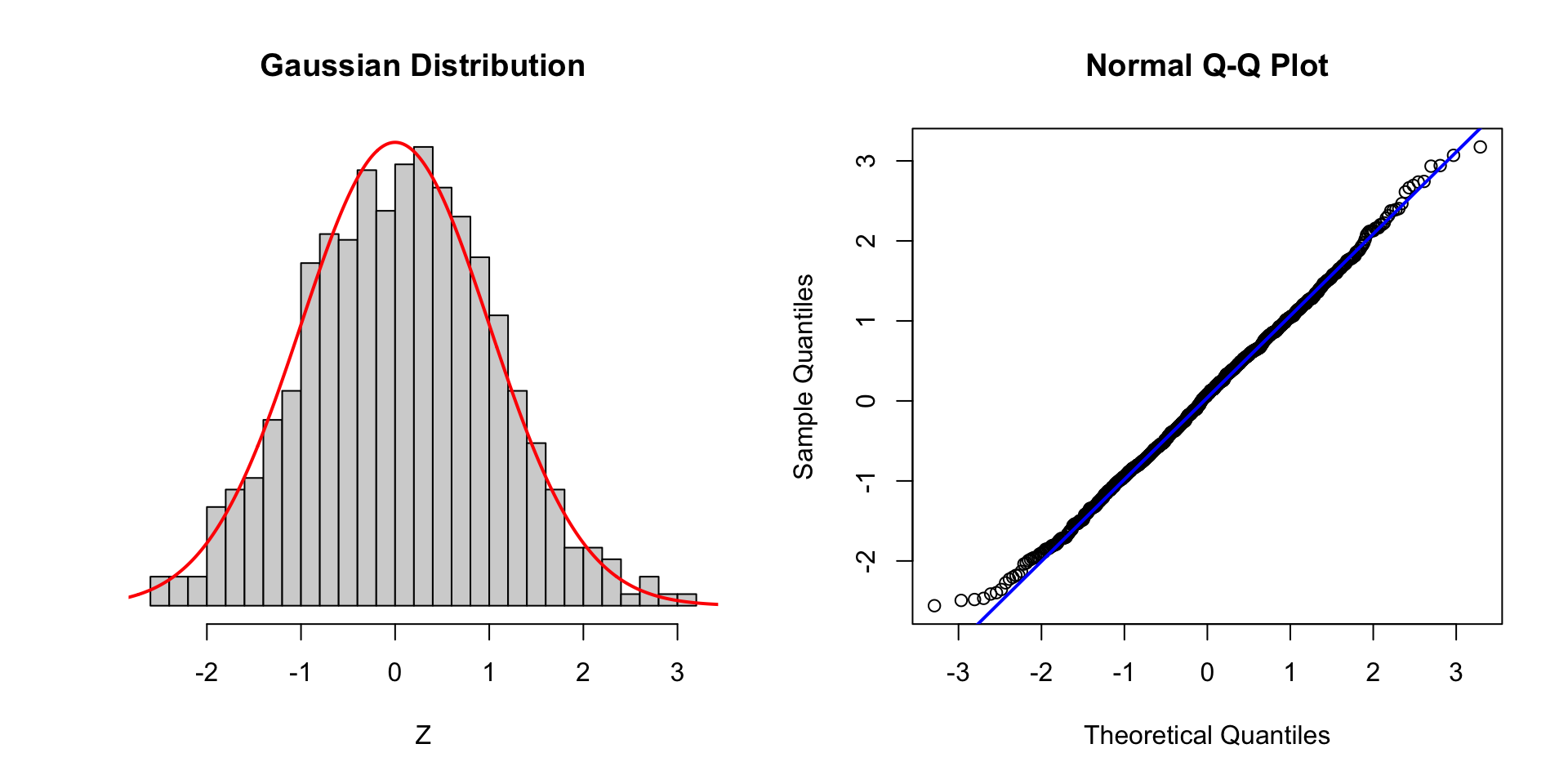
Plot - tale of 2 tails

Tale of 2 tails

Fat tails
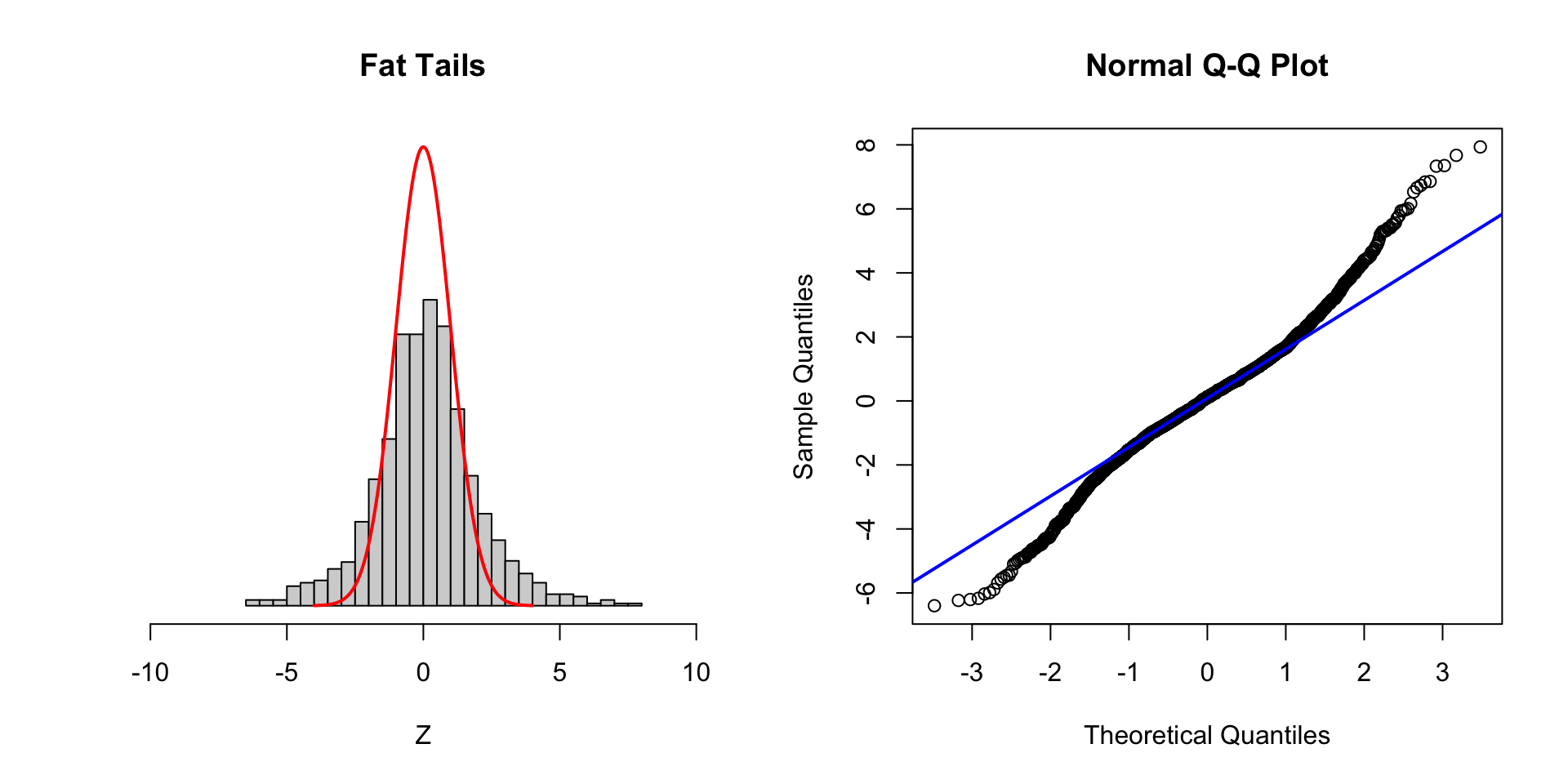
Thin tails
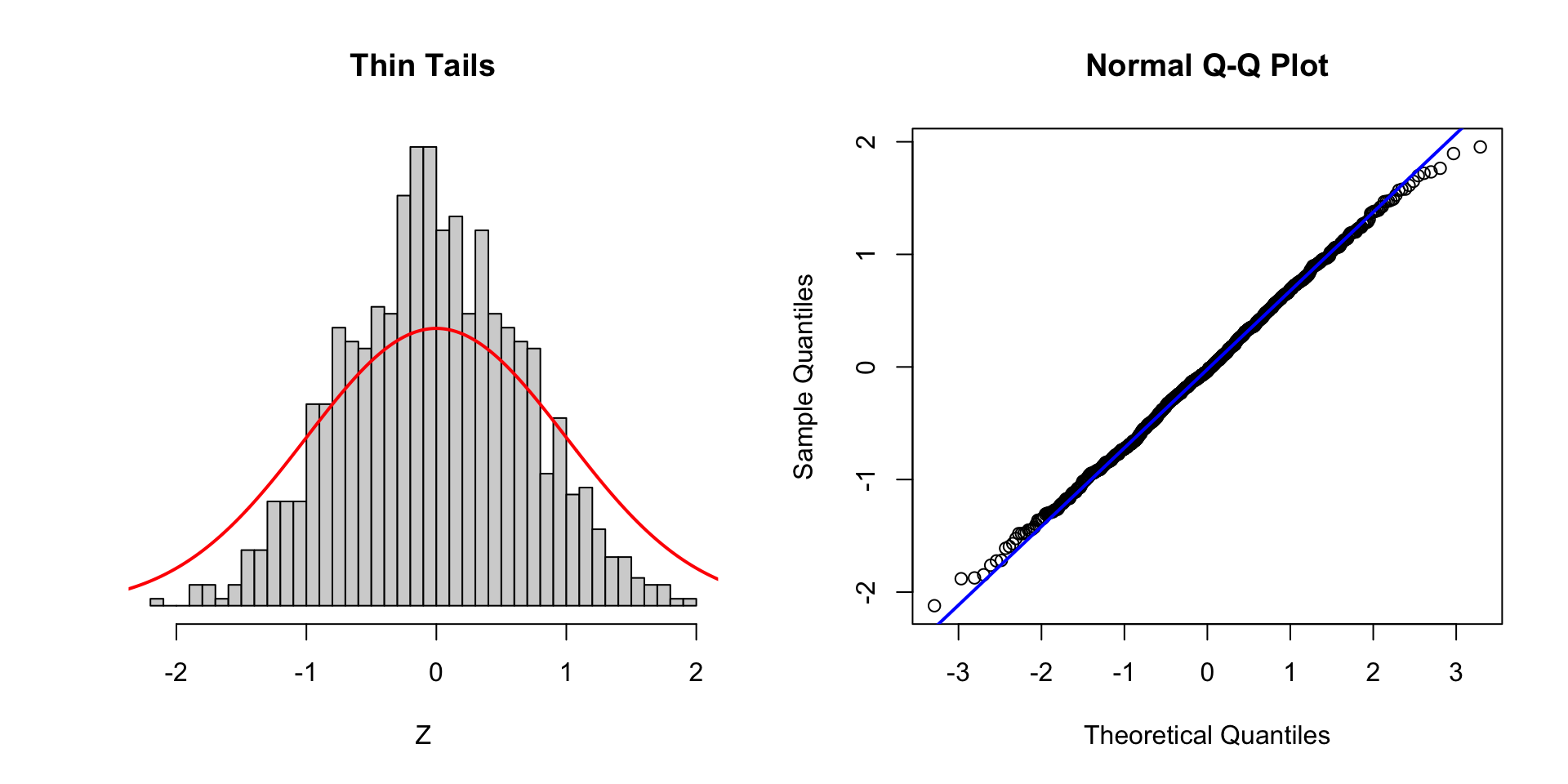
Bimodal

QQPlot in R
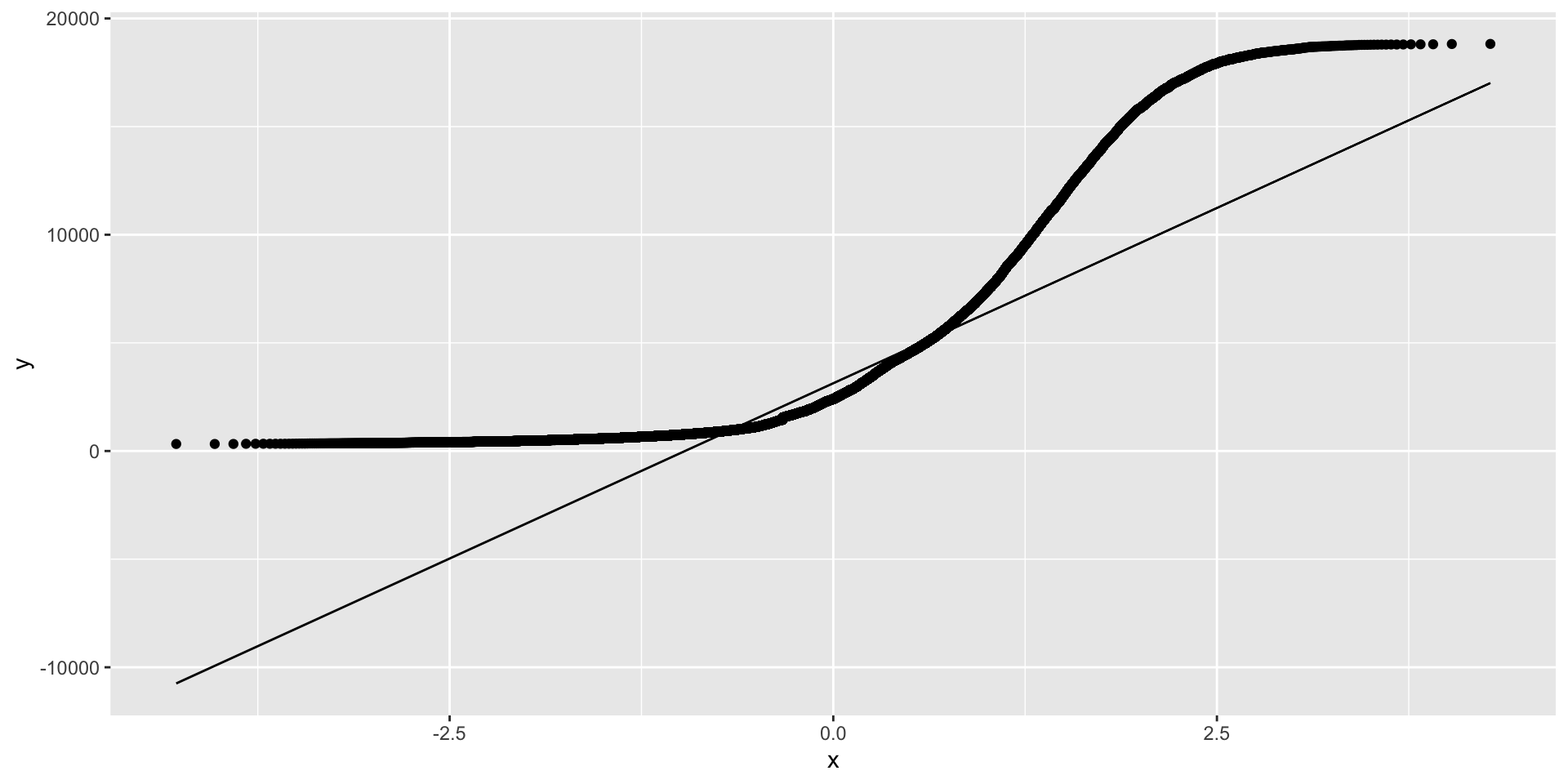
Skewness
- find the \(z\) scores for all data (\(z_i = \frac{x_i - \bar{x}}{s}\))
- \[K_3 = \frac{z_1^3 +z_2^3 + ... + z_n^3}{n}\]
- If \(K_3 \approx 0\), then \(x\) is symmetric
- As \(K_3\) gets larger than 0, more right-skewed
- As \(K_3\) gets smaller than 0, more left-skewed
Kurtosis
- find the \(z\) scores for all data (\(z_i = \frac{x_i - \bar{x}}{s}\))
- \[K_4 = \frac{z_1^4 +z_2^4 + ... + z_n^4}{n} - 3\]
- If \(K_4 \approx 0\), then \(x\) is approximately normal
- As \(K_4 < 0\) flat uniform distribution without tails
- As \(K_4 > 0\) many outliers
Take home
If you see departures from normality (large or small kurtosis, QQ plots that deviate from a straight line) PLOT the data and check.